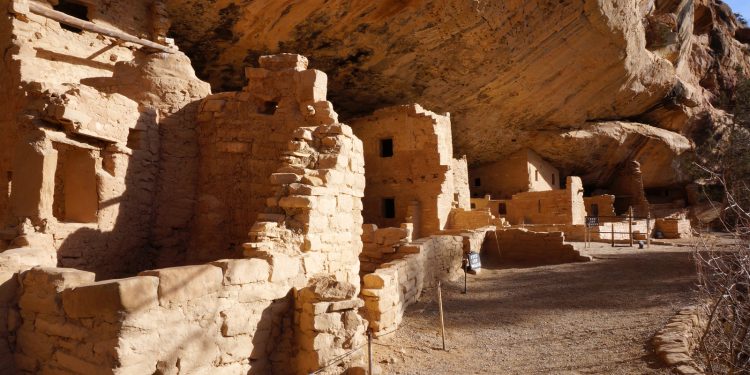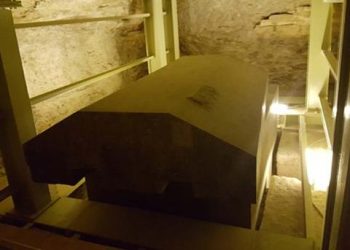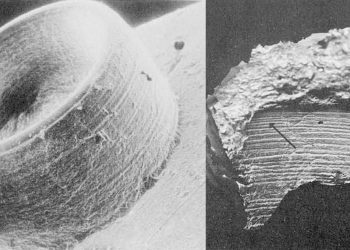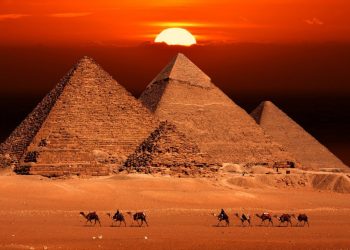Prepare to journey into the heart of one of history’s most baffling mysteries: the sudden and unexplained disappearance of the Anasazi civilization. In this riveting listicle, we’ll explore five compelling theories that attempt to shed light on the enigmatic fate of this ancient society. From climatic upheavals to warfare, social collapse to migration, we delve into the possible explanations for the vanishing of a civilization that thrived for over 1,000 years, only to vanish within a single generation. How did the Anasazi vanish? Why did they vanish? And are they really gone?
The Anasazi were an ancient Native American civilization that flourished in the Southwest region of the United States for over a thousand years. The term “Anasazi” is a Navajo word that means “ancient ones,” or “ancient enemy.” They are renowned for their impressive architecture, which included multi-story buildings made of sandstone and adobe bricks, as well as their intricate pottery and rock art. The Anasazi were skilled farmers who relied heavily on agriculture to sustain their communities, and they developed complex irrigation systems to manage the arid climate of the Southwest. Despite their remarkable achievements, the Anasazi’s mysterious disappearance during the late 13th century has puzzled historians and archaeologists for decades.
The fate of the Anasazi
Devastating Drought and Resource Scarcity
One of the most widely accepted theories behind the disappearance of the Anasazi is the occurrence of a catastrophic drought between 1275 and 1300 A.D. Prolonged dry spells would have made it difficult to grow crops, find water, and sustain the population. As resources dwindled, social tension and competition for survival likely increased, ultimately leading to the civilization’s collapse.
Warfare and Internal Conflict
Another theory suggests that the Anasazi were plagued by warfare and internal conflicts. As their society grew and expanded, competition for resources may have led to strife and violence between different factions. Archaeological evidence of burned villages and mass graves lend credence to this theory, pointing to a grim possibility that the Anasazi ultimately fell victim to their own aggression.
Cultural Transformation and Integration of the Anasazi
It’s possible that the Anasazi didn’t disappear at all, but rather underwent a cultural transformation and integration with neighboring tribes. As they faced environmental and social challenges, the Anasazi may have sought to join forces with other groups in the region, such as the Mogollon and the Hohokam. Over time, the distinct Anasazi culture could have blended with those of other societies, effectively making it appear as though the civilization vanished.
Mysterious Health Crisis
Some researchers propose that a mysterious health crisis could have contributed to the rapid decline of the Anasazi civilization. Evidence of malnutrition and disease has been found in the remains of some Anasazi individuals. While the exact nature of this health crisis remains unknown, it is possible that a combination of poor nutrition, a sudden epidemic, or other health-related factors contributed to their demise.
Spiritual and Symbolic Migration
Lastly, some scholars argue that the Anasazi’s disappearance may have been the result of a purposeful, spiritual migration. According to this theory, the Anasazi believed that they needed to leave their ancestral lands and embark on a spiritual journey to a new homeland. This idea is supported by the abandonment of ceremonial structures, such as kivas, and the relocation of sacred artifacts. In this scenario, the Anasazi may have dispersed into smaller groups, eventually merging with other Native American cultures and leaving behind their once-great civilization.
So, is this what happened to the Anasazi?
While the exact reasons behind the mysterious disappearance of the Anasazi remain elusive, each of these five theories offers a fascinating glimpse into the potential causes. From environmental catastrophes to cultural shifts, the fate of the Anasazi serves as a powerful reminder of the fragility of human civilizations and the impact that external factors can have on their existence. Regardless of the exact reasons behind the disappearance of the Anasazi, their story serves as a powerful reminder of the complexity and unpredictability of human history. As we continue to study the past, we can gain a better understanding of the forces that shape our own societies and cultures today.
https://www.youtube.com/watch?v=wHdLLyZIjAM
PLEASE READ: Have something to add? Visit Curiosmos on Facebook. Join the discussion in our mobile Telegram group. Also, follow us on Google News. Interesting in history, mysteries, and more? Visit Ancient Library’s Telegram group and become part of an exclusive group.











